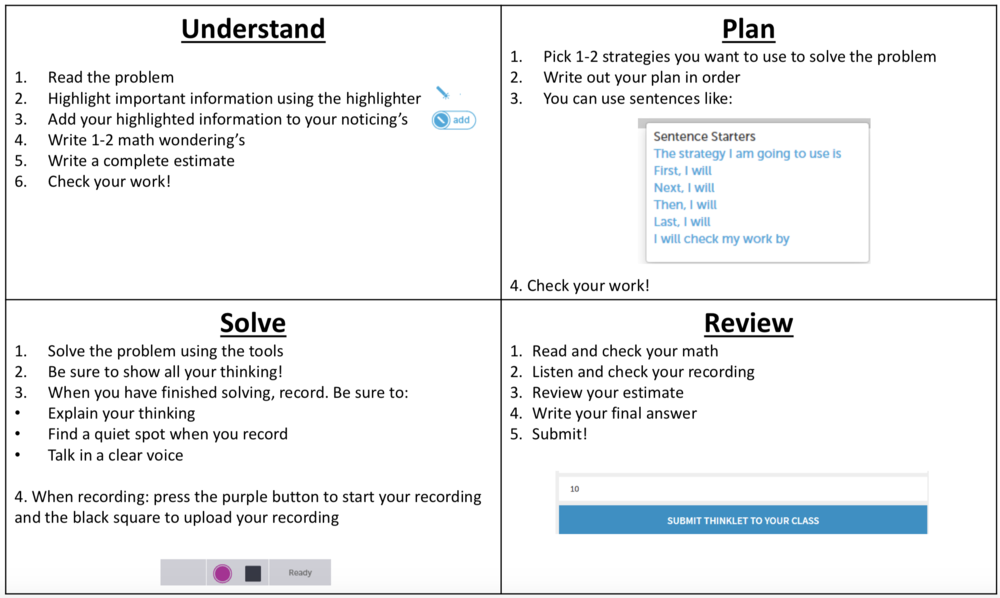Fostering Student Independence in Math Workshop
Picture this. Your students have been introduced to CueThink through whole group and small group lessons. They have worked through various thinklets with partners or with the help of you as the teacher. Their problem solving and critical thinking skills are booming. Their voice recorded explanations are becoming stronger and their peer to peer annotations are becoming more meaningful each day. It is time to finally let your students work through a thinklet independently, during math workshop.
But then you hear it. That one sentence that makes you rethink all your hard work and countless times modeling lessons…. “What do I do in this phase again?” With that one sentence, you suddenly feel defeated and worried that your students aren’t ready to work through a problem on their own. This is how many teachers at my school felt during the transition from whole class or small guided math group lessons to self-regulated work stations. Many of the teachers at my school realized that students still needed some additional support when working through a thinklet on their own.
As a school, we decided that we needed some type of graphic organizer or resource that students could reference that laid out the expectations and requirements for each individual phase. We had worked with the students modeling what each phase should look like and we brainstormed what strong annotations and recordings sound like. Yet, students still needed more supervision when it came time to solving a problem during math centers. They needed something to function as a memory jogger when they were asked to work independently on a thinklet. The graphic organizer we created can be used for self-reflection or as a checklist for students to use as they move through completing a problem.
After seeing an awesome anchor chart on a twitter post, we were able to take some of their expectations and combine them with the language we used in the classroom to take the blank graphic organizer and create a version with recommendations for each phase. This tool explains, in a few kid-friendly steps, what the expectations are for each phase. We included a visual of important buttons or tools so even our younger students could access this resource. Teachers were encouraged to give individual copies of this resource to students to glue into their math notebook or print a larger version to hang at their computer center. This organizer can be adapted to meet the needs of older students by adding more detail or take away some of the language and add more visuals for the younger students
“CueThink Guidelines for 4 Phases” exemplar graphic organizer
Overall, we have found it to be such a simple resource, but one that has made a big impact. Many of the teachers using this organizer happily report that their students are working more independently. They are creating higher quality thinklets without having to stop and interrupt their teacher’s guided math group. Hopefully, you find this resource helpful too!
Melanie Curto is the math specialist at Navy Elementary School in Fairfax, VA. She holds a Masters in Education from James Madison University, and has taught 1st, 2nd, and 4th grade. Melanie was first introduced to CueThink as part of a pilot program at her school in 2016. Outside of school, Melanie enjoys reading, watching Netflix, and spending time outside with her family.


